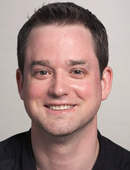Biography
Research Topics
Cell Adhesion, Cell Biology, Gap Junctions, Glycobiology, Hepatitis C Virus, Imaging, Infectious Disease, Intracellular Transport, Liver, Lysosomes/endosome, Membrane Proteins/Channels, Membranes, Protein Complexes, Protein Trafficking & Sorting, Retrovirus, Virulence Genes, Viruses and Virology
Cell Adhesion, Cell Biology, Gap Junctions, Glycobiology, Hepatitis C Virus, Imaging, Infectious Disease, Intracellular Transport, Liver, Lysosomes/endosome, Membrane Proteins/Channels, Membranes, Protein Complexes, Protein Trafficking & Sorting, Retrovirus, Virulence Genes, Viruses and Virology
Multi-Disciplinary Training Area
Microbiology [MIC]
Microbiology [MIC]
